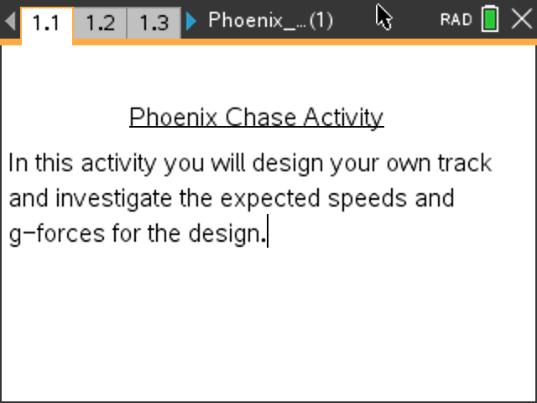Phoenix Chase

9-12
Phoenix Chase
In this activity, students will design their own track and investigate the expected speeds and g-forces for the design.
Phoenix International Raceway has varied banking all around the track. Turns 1-2 are progressively are banked from 10 to 11 degrees while Turns 3-4 are progressively banked from 8 to 9 degrees. The backstretch goes from 10 to 12 degrees and the frontstretch is 3 degrees. There is even a roller coaster effect going through the "dog leg" following the exit of turn 2 due to an elevation change. It is quite impossible to have an optimal set-up for both ends of this track. The differential in the banking angle with the difference in radius from one end to the other allows you to have a great car in one end, but not both, or a compromise set-up for both ends. Crew chiefs and engineers have their work cut out for them. As for the drivers, their athletic ability is tested. If the cars exit Turn 2 at 130 ft/sec (~ 90 mph) then in 5.3 seconds down the back straight they can get up to about 250 ft/sec (~170 mph); but if they go around the high bank turn at that speed, the driver would experience slightly more than 12 g's--the max in fighter aircraft with pressurized suits to prevent blacking out is around 10 g's. The result would be a track that is harder on brakes than Martinsville and subjects the drivers to as much stress (centripetal g loading) as they can take so they need to slow down in Turns 3 and 4 to reduce the g loading. Estimated lap times would be on the order of 22.5 to 23 seconds on new tires, and they would wear very fast on the flat curve being subjected to blow-outs due to high g loads on the 60 degree banked turn. It would be physically exhausting for all but the most well conditioned drivers. Can you design a track more fascinating than Phoenix?
About the Lesson
9-12
Vernier EasyData,Vernier EasyLink and Vernier EasyTemp are registered trademarks of Vernier Science Education.

